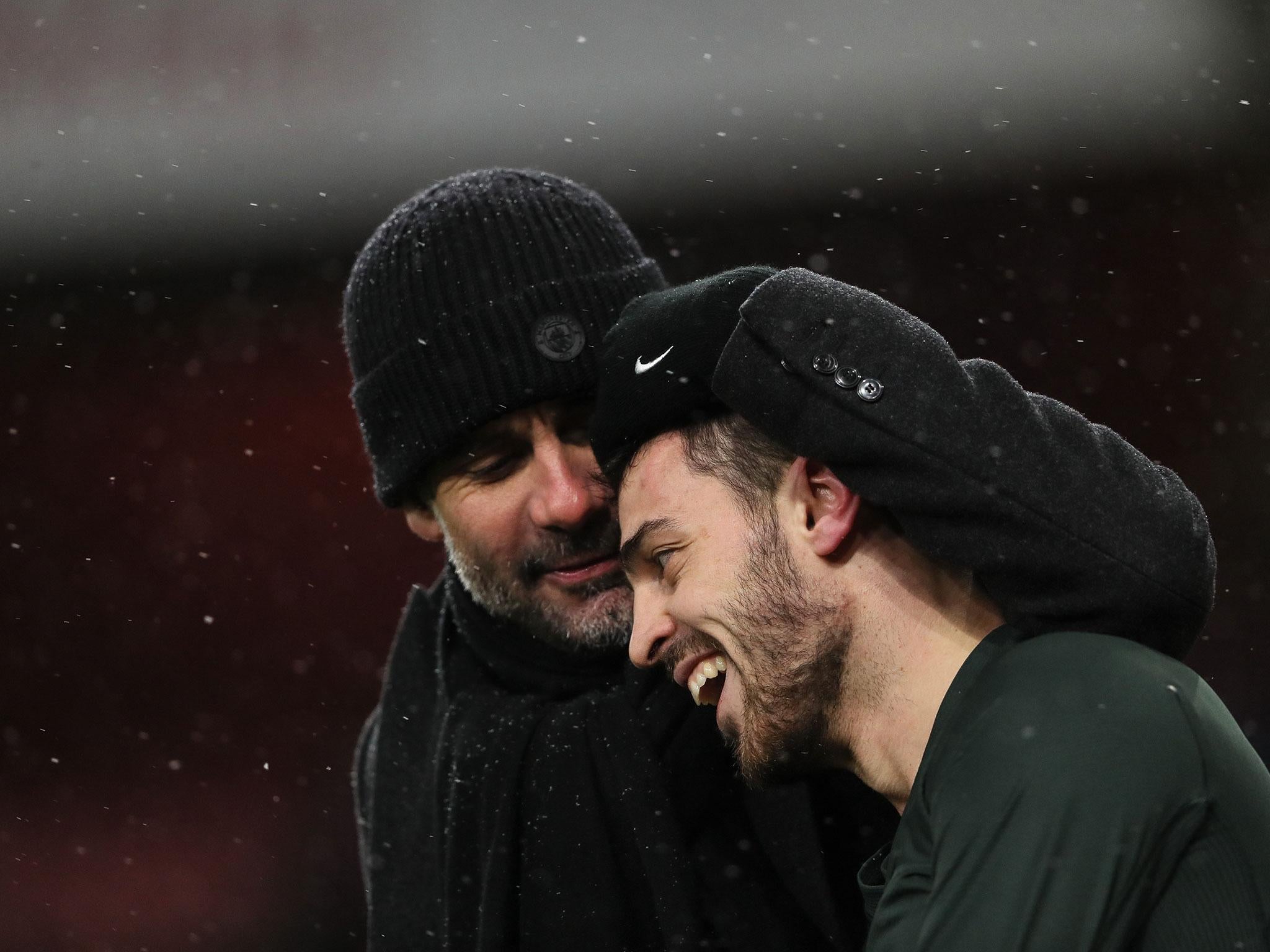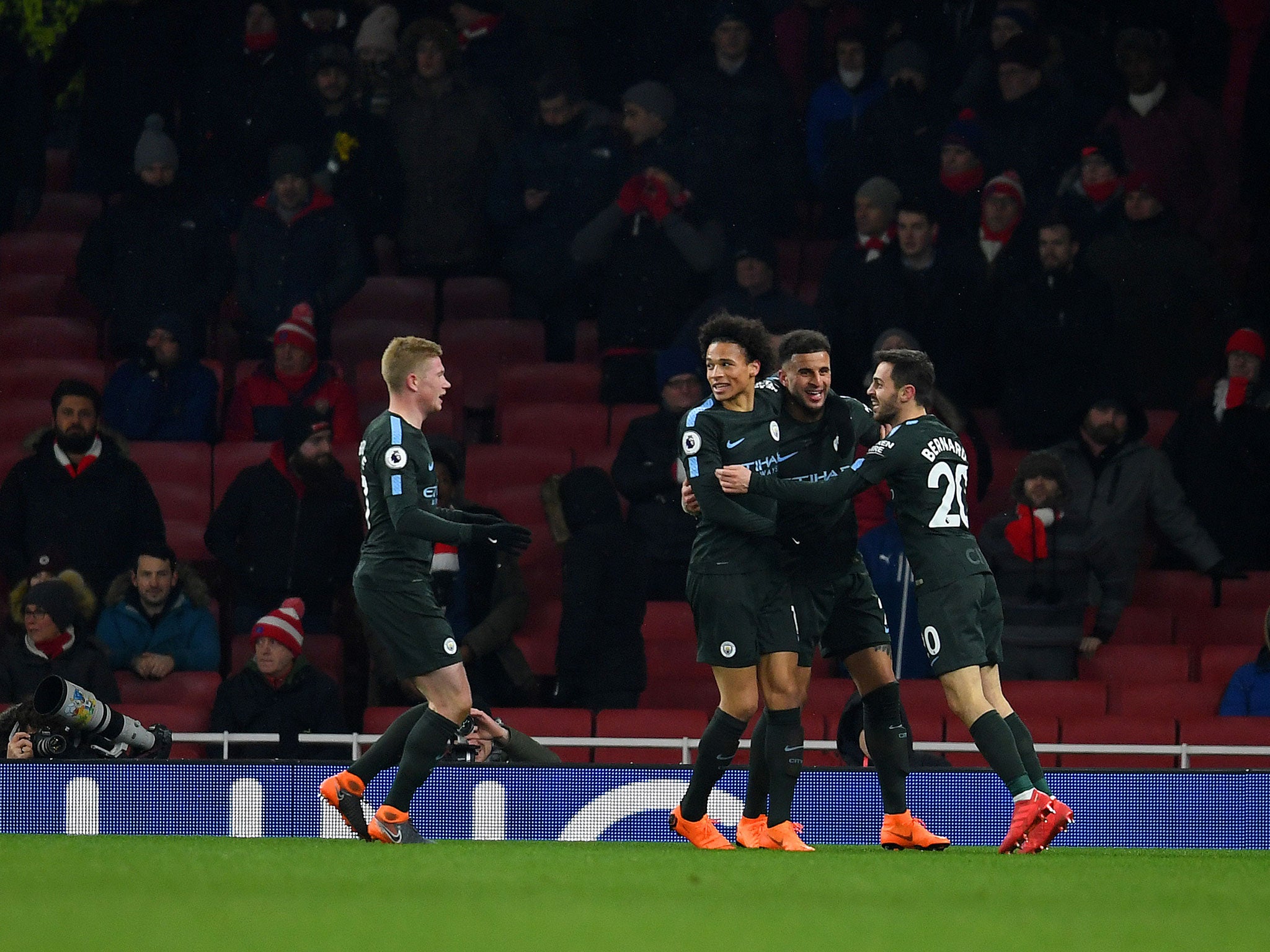Pep Guardiola's philosophy comes to fruition in dazzling Manchester City exhibition
Manchester City's players are all dancing to the same beat of the drum under Guardiola

Your support helps us to tell the story
From reproductive rights to climate change to Big Tech, The Independent is on the ground when the story is developing. Whether it's investigating the financials of Elon Musk's pro-Trump PAC or producing our latest documentary, 'The A Word', which shines a light on the American women fighting for reproductive rights, we know how important it is to parse out the facts from the messaging.
At such a critical moment in US history, we need reporters on the ground. Your donation allows us to keep sending journalists to speak to both sides of the story.
The Independent is trusted by Americans across the entire political spectrum. And unlike many other quality news outlets, we choose not to lock Americans out of our reporting and analysis with paywalls. We believe quality journalism should be available to everyone, paid for by those who can afford it.
Your support makes all the difference.Who knows when and where this Manchester City season is going to peak but half an hour into this game, in a snowstorm at the Emirates, they produced a moment to mark out exactly what they are aiming for.
If this first half felt like one of the peaks of City’s season, then the third goal was the best moment of the night. It would be difficult to imagine a goal that conveyed more of Pep Guardiola’s philosophy, or indeed another manager in world football whose teams would play like this.
It began, like all of City’s best moments, with Arsenal on the front foot, at least going through the motions of trying to press City and steal the ball from their defence. But Guardiola has a theory that every attack should start with 15 consecutive passes, not just to organise his own team but to disorganise the opposition. Here, as City’s defensive players fired the ball between them with one touch each, Arsenal grew increasingly ragged as they chased after the ball.
Sure enough, gaps appeared and City knew instantly when to go in for a kill. David Silva, who understands Guardiola’s thinking better than anyone, fired a forward pass through space to Sergio Aguero. He took one touch to burst away from Laurent Koscielny and suddenly City were in, racing into empty space.
From there, Kevin De Bruyne, Kyle Walker and Leroy Sane executed the final stages of the move just as well as Guardiola would expect. And with one touch each, at full pelt, never breaking stride. The overlapping run from the full-back, the incisive pass, the low cross towards the six-yard box for the tap-in. This is the City way, how you turn possession into goals, and it has been drilled into the squad for almost two years now. These players know exactly what they are meant to do, which is why at their fluid best, like here, they never have to pause to think.
The third goal was so good, in fact, that its memory obscured that of the brilliantly constructed second. That was another precisely constructed team move: David Silva set it off, bursting away from Aaron Ramsey on the left hand side, Sane beat Shkodran Mustafi inside and out, and Silva finished it off from Aguero’s lay-off. The first touch, with his right, past Hector Bellerin, the second with his left, past Petr Cech’s near post. Arsenal’s whole team destroyed by four City players, and not a touch or step out of place.
But if this was peak Guardiola, what did it say about Arsenal? It would be easy enough to blame the selection, to say that Wenger made it easy for City. He did play a team that was almost 4-1-5, he did play Granit Xhaka, laughably bad at defending, as his most defensively minded midfielder. But then City’s defensive midfielder, for want of a better word, was Ilkay Gundogan. A delightful passer and mover but not exactly fond of a tackle.
The Arsenal team was no more attacking than City’s was. And no-one could argue that they did not have enough in their front six to cause City problems: the speed of Pierre Emerick Aubameyang and Danny Welbeck, the incision of Aaron Ramsey, the creative brains of Mesut Ozil and Henrikh Mkhitaryan. And yet these players looked disparate, confused and disorganised, with and without the ball, with no chance of producing anything as coherent, planned and precise as City did.

But why not? When Arsene Wenger infamously said last week that Guardiola had not in fact raised the bar of elite football, and that he owed his success more to his squad, he made another revealing comment about coaching. He said that all the modern managers could do was “impulse our philosophy”, because the game belongs to the players.
To see Arsenal’s incoherent team out here, they did look like 11 players whose only direction was to have Wenger’s philosophy ‘impulsed’ at them a few times a week. But there is another way. Guardiola is far more hands-on, more prescriptive and ultimately more ambitious than Wenger. He does not just impulse his philosophy on the players, he has built a team, sketched out their every move and taught them how to do it. That was what City’s third goal was, the product of Guardiola’s brain played out on the pitch.
Join our commenting forum
Join thought-provoking conversations, follow other Independent readers and see their replies
Comments